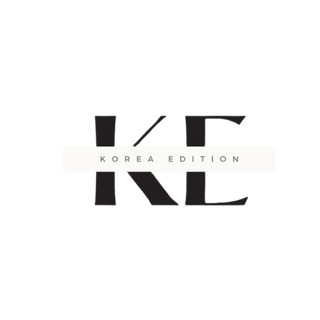-
Procedure Overview
Rhinoplasty, commonly referred to as a nose job, is a surgical procedure designed to enhance the shape, size, and overall appearance of the nose. It can also address functional issues, such as breathing difficulties. Rhinoplasty can be categorized into several types:
- Cosmetic Rhinoplasty: Focuses on improving the aesthetic appearance of the nose.
- Functional Rhinoplasty: Aims to correct structural issues that impair breathing.
- Revision Rhinoplasty: Performed to correct or enhance the results of a previous rhinoplasty.
- Ethnic Rhinoplasty: Tailored to maintain and enhance the unique nasal features of individuals from specific ethnic backgrounds.
Goals of the Surgery
The main goals of rhinoplasty are to:
- Improve the shape and proportion of the nose to harmonize with facial features.
- Correct nasal asymmetry or deformities.
- Enhance breathing function by correcting structural issues.
- Boost self-confidence through improved nasal aesthetics.
Pros and Cons of Rhinoplasty
Pros:
- Enhances facial symmetry and balance.
- Can improve both appearance and nasal function.
- Permanent results with long-lasting benefits.
Cons:
- Results may take time to fully manifest due to swelling.
- Potential risks include breathing issues, scarring, or the need for revision surgery.
- Requires a skilled surgeon to achieve the desired outcome.
How It Works
Rhinoplasty typically involves:
- Consultation: A thorough assessment of nasal structure and discussion of aesthetic and functional goals.
- Surgical Planning: Customized surgical plan based on individual needs.
- Procedure: Performed under general or local anesthesia, involving reshaping of nasal bones, cartilage, and soft tissue.
- Post-Surgery Care: Monitoring and follow-up appointments to ensure proper healing.
Preparation Before Surgery
- Medical Evaluation: Comprehensive check-up to determine fitness for surgery.
- Lifestyle Adjustments: Avoid smoking, alcohol, and certain medications that can affect healing.
- Pre-Surgical Instructions: Detailed guidance on fasting, medications, and skincare prior to the procedure.
Recovery After Surgery
- Initial Recovery: Swelling and bruising typically subside within 1-2 weeks.
- Full Recovery: Most patients resume normal activities within 3-4 weeks, with final results visible after 6-12 months.
- Aftercare: Follow the surgeon’s instructions regarding nasal care, physical activity, and follow-up visits to ensure optimal healing.
Risks & Side Effects
- Common risks include swelling, bruising, and temporary numbness.
- Potential complications can include infection, difficulty breathing, or unsatisfactory aesthetic outcomes.
- Choosing an experienced surgeon can significantly reduce risks.
FAQs
Q: How long does the surgery take?
A: The procedure typically takes 1 to 3 hours, depending on the complexity.Q: Will there be visible scars?
A: Incisions are usually made inside the nostrils or in inconspicuous locations, minimizing visible scarring.Q: Is the procedure painful?
A: Post-surgery discomfort is common but manageable with prescribed pain medication.Q: How soon can I see the results?
A: Initial improvements are noticeable within a few weeks, but full results can take up to a year as swelling gradually subsides.Q: Can rhinoplasty be combined with other procedures?
A: Yes, it is often combined with procedures like chin augmentation or facial contouring to achieve a more harmonious facial profile.
Procedure Overview
Rhinoplasty, commonly referred to as a nose job, is a surgical procedure designed to enhance the shape, size, and overall appearance of the nose. It can also address functional issues, such as breathing difficulties. Rhinoplasty can be categorized into several types:
- Cosmetic Rhinoplasty: Focuses on improving the aesthetic appearance of the nose.
- Functional Rhinoplasty: Aims to correct structural issues that impair breathing.
- Revision Rhinoplasty: Performed to correct or enhance the results of a previous rhinoplasty.
- Ethnic Rhinoplasty: Tailored to maintain and enhance the unique nasal features of individuals from specific ethnic backgrounds.
Goals of the Surgery
The main goals of rhinoplasty are to:
- Improve the shape and proportion of the nose to harmonize with facial features.
- Correct nasal asymmetry or deformities.
- Enhance breathing function by correcting structural issues.
- Boost self-confidence through improved nasal aesthetics.
Pros and Cons of Rhinoplasty
Pros:
- Enhances facial symmetry and balance.
- Can improve both appearance and nasal function.
- Permanent results with long-lasting benefits.
Cons:
- Results may take time to fully manifest due to swelling.
- Potential risks include breathing issues, scarring, or the need for revision surgery.
- Requires a skilled surgeon to achieve the desired outcome.
How It Works
Rhinoplasty typically involves:
- Consultation: A thorough assessment of nasal structure and discussion of aesthetic and functional goals.
- Surgical Planning: Customized surgical plan based on individual needs.
- Procedure: Performed under general or local anesthesia, involving reshaping of nasal bones, cartilage, and soft tissue.
- Post-Surgery Care: Monitoring and follow-up appointments to ensure proper healing.
Preparation Before Surgery
- Medical Evaluation: Comprehensive check-up to determine fitness for surgery.
- Lifestyle Adjustments: Avoid smoking, alcohol, and certain medications that can affect healing.
- Pre-Surgical Instructions: Detailed guidance on fasting, medications, and skincare prior to the procedure.
Recovery After Surgery
- Initial Recovery: Swelling and bruising typically subside within 1-2 weeks.
- Full Recovery: Most patients resume normal activities within 3-4 weeks, with final results visible after 6-12 months.
- Aftercare: Follow the surgeon’s instructions regarding nasal care, physical activity, and follow-up visits to ensure optimal healing.
Risks & Side Effects
- Common risks include swelling, bruising, and temporary numbness.
- Potential complications can include infection, difficulty breathing, or unsatisfactory aesthetic outcomes.
- Choosing an experienced surgeon can significantly reduce risks.
FAQs
Q: How long does the surgery take?
A: The procedure typically takes 1 to 3 hours, depending on the complexity.
Q: Will there be visible scars?
A: Incisions are usually made inside the nostrils or in inconspicuous locations, minimizing visible scarring.
Q: Is the procedure painful?
A: Post-surgery discomfort is common but manageable with prescribed pain medication.
Q: How soon can I see the results?
A: Initial improvements are noticeable within a few weeks, but full results can take up to a year as swelling gradually subsides.
Q: Can rhinoplasty be combined with other procedures?
A: Yes, it is often combined with procedures like chin augmentation or facial contouring to achieve a more harmonious facial profile.
Rhinoplasty FAQ
Image with text
Use these sections to promote a particular feature with editorial photography
Image with text
Use these sections to promote a particular feature with editorial photography

